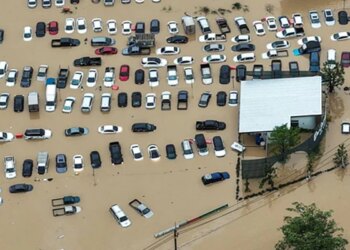Select Language:
- Weather authorities issue warnings about unusual rainfall.
- Expected rains may hinder search and rescue operations.
- National leader plans to attend regional summit in Bangkok.
BANGKOK: The death toll from the catastrophic earthquake in Myanmar has exceeded 3,000, with hundreds more unaccounted for, as forecasts of unseasonal rains pose a new challenge for rescuers and aid workers striving to assist those affected in a nation already embroiled in civil conflict.
The 7.7-magnitude earthquake that struck last Friday, one of the strongest to hit the Southeast Asian nation in a century, devastated a region home to approximately 28 million people, collapsing structures, flattening neighborhoods, and leaving many without basic necessities like food, water, and shelter.
As of Wednesday, the count of fatalities rose to 3,003, with 4,515 individuals injured and 351 still missing, according to a statement from Myanmar’s embassy in Japan on Facebook, while rescuers continue their arduous efforts to locate survivors.
Conditions may deteriorate further as weather officials have predicted unusual rainfall from Sunday through April 11, threatening the areas most affected by the earthquake, including Mandalay, Sagaing, and the capital, Naypyidaw.
“Rain is on the way, and there are still many individuals trapped,” reported an aid worker in Myanmar to Reuters. “Particularly in Mandalay, if it starts to rain, those who are trapped could drown even if they are still alive.”
According to the embassy’s report, there have already been 53 airlifts of aid to Myanmar, while over 1,900 rescue personnel from 15 countries, including neighbors in Southeast Asia as well as China, India, and Russia, have arrived to assist.
Despite the dire circumstances, General Min Aung Hlaing, the leader of the military junta, is set to depart the disaster-stricken nation on Thursday to attend a rare regional summit in Bangkok, as announced by state television.
This trip is uncommon for a leader widely perceived as an outcast by many nations, facing severe international sanctions and an ongoing investigation by the International Criminal Court.
Unseasonable Rainfall
The anticipated rainfall adds to the challenges encountered by rescue and aid organizations, which have called for unhindered access to all affected regions despite the ongoing civil unrest.
Since regaining power in a coup in 2021 that displaced the democratically elected government of Nobel laureate Aung San Suu Kyi, the military has struggled to maintain control over Myanmar.
The military junta has faced global isolation since the coup, leading to economic decline and a breakdown of essential services, including health care.
On Wednesday, state-run MRTV announced that a unilateral ceasefire would take effect for 20 days to facilitate relief efforts after the earthquake but cautioned that authorities would “react appropriately” if any rebel groups launched attacks.
This decision follows a major rebel coalition’s declaration of a ceasefire on Tuesday aimed at supporting humanitarian efforts.
Nearly a week after the quake, rescue operations in nearby Thailand continue as teams search through the wreckage of a collapsed skyscraper in Bangkok that was still under construction.
Rescuers have been utilizing excavators and bulldozers to sift through 100 tons of concrete in search of survivors after the disaster claimed 15 lives, with 72 individuals still unaccounted for.
The national death toll in Thailand currently stands at 22.







